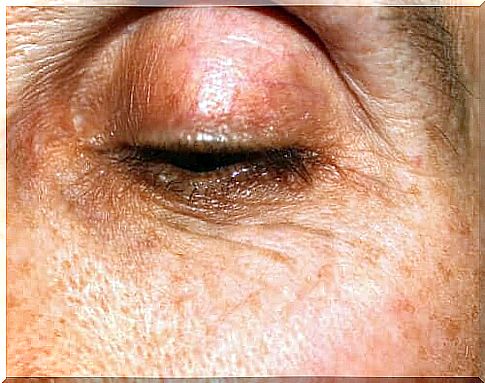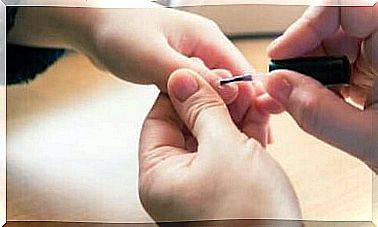Characteristics Of Meibomian Gland Dysfunction

Meibomian gland dysfunction is the inflammation of the meibomian glands in the upper and lower eyelids. These release oils in that area. This condition occurs when they become thicker than normal.
Meibomian oils are important for eye health. The eyes would become dry and irritated if the production of these oils stopped. This condition does not cause permanent damage in most cases. However, in rare cases, it can lead to corneal ulcers or more serious problems.
Causes of Meibomian Gland Dysfunction
First of all, inflammation of the meibomian glands occurs when the glands release more oils than normal. They produce oils that are slowly absorbed by the tear film, the thin layer of fluid that covers the eye. It consists mainly of water, which would evaporate if no oils were present.
Certain conditions, such as rosacea, acne or allergies, as well as hormonal changes during adolescence, can make the oils thicker or denser. Such oils no longer spread over the tear film, but accumulate on the edges of the eyelids.
In addition, these accumulations are a food source for bacteria present there. The dysfunction occurs when these microorganisms increase excessively. It often occurs simultaneously with blepharitis, which also leads to the accumulation of a dandruff type at the base of the eyelashes.
Symptoms of Meibomian Gland Dysfunction
The most obvious symptom of this type of dysfunction is redness and swelling of the eyelids. It can cause a gritty or burning sensation in the eyes or itching of the eyelids. Other common symptoms include:
- Watery eyes.
- Peeling of the skin around the eyes.
- Crusting of the eyelashes when waking up in the morning.
- Frequent styes.
- Excessive blinking.
- Blurred vision.
- Sensitivity to light.
- Abnormal growth of eyelashes.
- Loss of eyelashes.
- Finally, dry eyes (Spanish link).
In the latter case, it is possible that the meibomian glands are interconnected and then there is less oil production. In all cases, the symptoms can be mild or have varying degrees of severity.
Diagnosis
Meibomian gland dysfunction can be detected with a routine eye exam. For example, the doctor will examine the front of the eyeball, with special emphasis on the eyelids. The doctor can use a bright light to detect possible blockage of the maypole glands (Spanish link).
Sometimes they take a sample of the discharge or the crust on the eyelids. A lab technician then analyzes it to determine the presence of bacteria in the fluid. This is to gather more evidence to diagnose and prescribe treatment.
Therapy

Doctors usually recommend applying moist heat to the lid of the affected eye to reduce symptoms. The patient must first carefully clean the edges of the eyelid.
The doctor will also treat rosacea or acne if present. There are instances where meibomian gland dysfunction treatment may require one or more of the following measures:
- It may be necessary to squeeze the meibomian gland to remove the secretions clogging the exit.
- A cannula can be inserted into the opening of the glands to flush out the thickened oil.
- Taking antibiotics.
- Taking fish oil to improve oil flow in the eye.
- Using an antibiotic ointment on the eyelid.
- Using a hypochlorous acid medication to clean the eyelid.
- Finally, by using Lipiflow, a device that warms the eyelid and helps the glands relax.
Prevention of Meibomian Gland Dysfunction
There is no specific way to prevent this condition. An important measure is to treat rosacea or acne if present to prevent it from developing into meibomian gland dysfunction.
It is also important to avoid certain foods such as chocolate as they could make symptoms worse. In any case, it is best to maintain good eye hygiene. This includes using an ophthalmic bath as well as taking breaks and doing eye exercises.
Consult your doctor if you suffer from styes in your high
The symptoms of meibomian gland dysfunction are usually quite uncomfortable. However, they rarely cause major problems. In other words, it doesn’t threaten your eyesight, but it can become chronic and impair your quality of life.
Moreover, the available treatments are usually not immediately effective. You have to persevere and let time do its work. Always consult a doctor if treatment is ineffective, especially if styes begin to appear.








